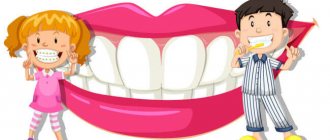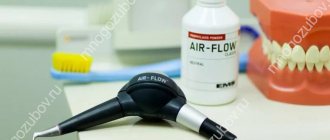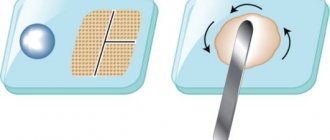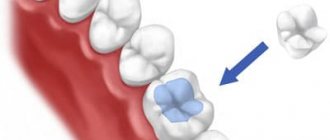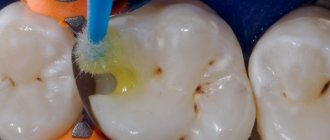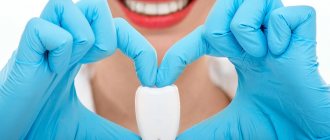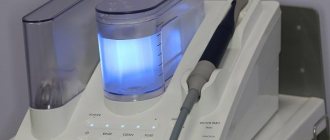Nobody likes going to the dentist, even though everyone knows how important oral health is and how strongly it relates to our overall health. But new technologies - from virtual reality to artificial intelligence (AI) - will soon revolutionize dentistry and our overall attitude to oral health.
In this review, we take a look at 9 new technologies that will change this area of healthcare in the near future.
Artificial intelligence
Already, dentists are using software to provide information to make clinical decisions. Soon such programs will work on the basis of AI algorithms, which will significantly facilitate the work of a doctor.
Such intelligent algorithms can be integrated into the healthcare system to analyze health data, research results and treatments to offer diagnostic and therapeutic recommendations for individual patients.
This will be possible thanks to the accumulation of information, in particular genetic data, which will allow a deeper understanding of the system of individual care for each patient. With AI tools that have access to such information, doctors will be able to select the best treatment options and increase the likelihood of success.
With ever-growing health data, AI algorithms can help professionals better manage dental problems. In 2022, researchers developed a machine learning method to accurately quantify immune cells near oral cancer cells. This gives a better idea of the cancer's spread and resistance, thereby helping to determine the chances of survival. Others are using neural networks to better detect tooth decay and periodontitis in X-rays. Such approaches may become standard practice in the near future.
Integrated system for automating the activities of a medical institution
The developed medical information systems can be divided according to the following criteria:
- Medical systems that include programs that solve narrow problems for medical specialists, such as radiologist, ultrasound, etc.
- Medical systems for organizing doctors' office work and processing medical statistics. Hospital information systems.
- The system for collecting and processing information in modern medical centers must perform so many different functions that cannot even be described, much less automated, in any short time. The life cycle of an automated information system consists of five main stages:
System development or acquisition of a ready-made system;
- System implementation;
- Software maintenance;
- System operation;
- Dismantling the system.
Teledentistry
Patients with special needs, elderly people in nursing homes and people living in rural areas have difficulty accessing a dentist and almost never have a choice. This may change significantly with the rise of teledentistry.
Telemedicine services, already offered in the US by companies such as Teledenists and MouthWatch, make it easier to access dental services. These services are significantly less expensive for patients, offer lower-cost prevention options, and allow patients to consult with otherwise unavailable health care providers. For example, MouthWatch's TeleDent service offers an all-in-one teledentistry platform that allows patients to take photos of their mouth or teeth, remotely send relevant information to the dentist, and conduct consultations in real time. The dentist can start a video chat with the patient and caregiver so that the provider can actually see and talk to the patient, establish rapport with them, and then bring them into the doctor's office (if necessary).
Candid, which provides teeth straighteners and treatment plans to patients, has tested a technology called Dental Monitoring that involves handing patients a connected ScanBox device. The device looks like a virtual reality headset. But instead of covering people's eyes, it looks into their mouths and controls how they use the aligners.
The ScanBox connects to the patient's smartphone, captures images and sends them to a remote orthodontist. The uploaded images are also scanned by an artificial intelligence algorithm which can track the patient's progress, assess oral hygiene and identify any potential health problems such as visible tooth decay or gum recession.
An orthodontist reviews each patient's case, determines whether they are eligible for treatment, and if so, creates a treatment plan. The aligners are then mailed to patients, who typically must be at least 16 years old and have mild to moderate alignment problems.
We also note that as the importance of remote care has increased during the pandemic, telemedicine is also gaining momentum, and authorities are responding accordingly.
How much does digital technology cost?
A good modern service provided by a digital dentistry clinic in Moscow, with modern equipment, cannot be cheap! There are many doctors offering crowns and veneers at a price that is not even half the cost of the work of doctors practicing in digital dentistry. The cost of restoration is not so high, and the price consists of the cost of the equipment itself - it is very expensive. There are a number of cases when digital technologies help to cope with a problem that cannot be solved without their use. For example, a patient’s tooth has chipped off, and he has an important event tomorrow.
Publisher: Expert magazine about dentistry Startsmile.ru
Smart toothbrushes
The “smart” toothbrushes that have appeared on the market, according to their manufacturers, make it much easier to maintain oral hygiene and prevent the formation of plaque or caries.
The Kolibree Electric Toothbrush provides proper teeth cleaning and offers children different games to maintain the habit of brushing regularly. The Philips Sonicare smart toothbrush comes with sensors in the handle. They provide real-time feedback through a companion app, warning you if you're using too much force when brushing your teeth and even coaching the user on how to brush properly. There are several such devices on the market, including from companies such as Colgate and Oral-B.
True, we must admit that these are technologies that are not particularly necessary. While having a personal trainer to optimize your daily oral hygiene routine may seem tempting, not everyone is enthusiastic about the technology. An app like this tells you to change your brushing, but doesn't improve that technique. Rather, this will be done by the dentist, who can demonstrate the correct technique at the next appointment.
Additionally, by purchasing smart toothbrushes from companies like Procter & Gamble and Philips Oral Healthcare, you agree to their privacy policies, which allow them to share your data with third parties. So you might want to consider getting a toothbrush like this only from a company that gives you more control over your data, or one that won't share it with third parties at all.
Augmented Reality
Augmented reality (AR) technology is already beginning to be used in dentistry for both educational and clinical purposes.
Image Navigation's DentSim Simulator system pairs this technology with a mannequin on which students can perform procedures, receiving immediate feedback as their movements are tracked. This helps them quickly identify where they need to improve and develop their skills. Today, the system is already used by 8,500 students at dental schools around the world.
In dental practice, this technology is more common in reconstructive and aesthetic procedures to help patients know what they will look like after treatment. For example, SmartTek and Kapanu have developed AR applications that use a phone or tablet camera to superimpose a virtual image of an improved set of teeth onto real teeth before the procedure. The application works by comparing a 3D scan of the patient's oral cavity (many doctors already perform such an operation in Europe) with pre-prepared sets of scans, which represent healthy teeth obtained during similar treatment procedures.
The program uses a camera to take pictures of the patient's mouth and teeth, then overlays an image of the corrected teeth, and that's where the fun begins. Then the user can correct his own smile by adjusting his teeth - the distance between the teeth, different shapes of teeth, etc. Moreover, all these changes are visible “live”.
After the patient has “customized his dentition” and carefully assessed it in the augmented reality “mirror,” the finished model is sent to production, wherever such tooth replacement is performed.
A virtual reality
Just like augmented reality technology, virtual reality (VR) can be used for training and advanced training of dentists. Typically, only a couple of students can peer over the surgeon's shoulder as he performs a complex operation, and this significantly complicates the learning process. But a VR camera allows you to broadcast an operation around the world and do it literally “through the eyes of a surgeon” if students use VR glasses. For example, back in 2015, Nobel Biocare organized a broadcast of dental surgery, which was accessible through virtual reality devices.
Virtual reality technology is also useful for patients. An experiment involving 69 patients showed that VR can be used as an effective distraction tool. Patients wore glasses that displayed calming natural scenes and then recalled the treatment more positively. One such VR tool for reducing dental anxiety is the OperaVR system.
CT scan
A method for studying the state of the human body, in which sequential, very frequent measurements of thin layers of internal organs are made. These data are recorded in a computer, which builds a complete three-dimensional image based on them. The physical basis of measurements is varied: X-ray, magnetic, ultrasonic, nuclear, etc.
A set of devices that provide measurements, scanning, and a computer that creates a complete picture is called a tomograph.
Tomography is one of the main examples of the introduction of new information technologies in medicine. Creating this method without powerful computers would have been impossible.
Modeling and 3D printing
Computer modeling and manufacturing technologies using 3D printing are beginning to revolutionize dental laboratories. They are being transformed into significantly cheaper and more efficient digital laboratories.
With the help of new technologies, the manufacturing process, for example, of crowns, is significantly accelerated. The tooth is prepared for installation of the prosthesis, then a picture of it is taken, which is sent to the computer, which controls the machine, which produces a crown suitable for this particular patient right in the office and very quickly.
By using 3D printing, all intermediate stages that create a queue are eliminated, and the doctor’s work is significantly simplified. Such solutions for dentists are already offered by Stratasys, Envisiontech and FormLabs.
3D printers are also capable of faster and more accurate creation of orthodontic models, surgical guides, aligners, retainers, and more dental equipment. These are tasks that would take longer using traditional methods. This helps improve workflows, reduce errors and effort, ultimately saving time and money.
The importance of this technology has been further highlighted during the COVID-19 crisis as it can bypass traditional supply chains to meet hospital needs. Since the technology is expected to become an integral part of medical practice, it will also be introduced in dental laboratories.
Use of modern information technologies in medical laboratory research
When using a computer in laboratory medical research, a certain diagnostic algorithm is included in the program. A database of diseases is created, where each disease corresponds to certain symptoms or syndromes. During the testing process, using an algorithm, a person is asked questions. Based on her answers, symptoms (syndromes) are selected that best correspond to the group of diseases. At the end of the test, this group of diseases is displayed with a percentage indication - how likely this disease is for this test. The higher the percentage, the higher the likelihood of this disease.
Attempts are also being made to create a system (algorithm) that would produce not several, but one diagnosis. But all this is still at the development and testing stage. In general, today more than 200 computer expert systems have been created in the world.
Intraoral camera
One of the biggest inconveniences that we encounter in the dentist's chair is the inability to open our mouth even wider, which does not allow the doctor to clearly see what he needs to see, even with the help of his dental mirror. Such situations are not only inconvenient for both the patient and the doctor, but also painful. An intraoral camera solves this problem.
Various types of such devices are already offered by MouthWatch, Dürrdental and Carestream Dental. Recent developments in this area make it possible to create revolutionary devices with unique “liquid” lenses that work like the human eye, allowing you to easily obtain a clear, detailed image of all corners of the patient’s mouth.
For example, the MouthWatch mobile camera is a special medical tool for visualizing the condition of the inner surface of the mouth, which, unlike existing systems, is very inexpensive. The device connects to a computer or tablet via USB and includes special MouthWatch Home Monitoring software and an image capture program. The system integrates with popular imaging systems such as Dexis, Schick, Apteryx and many others. The camera does not need to be focused, and it is controlled with just one button.
Such devices are very useful for launching teledentistry services.
Regenerative Dentistry
One of the most interesting and promising areas in dentistry is dental regeneration and caries prevention. Bioactive replacement of hard tooth tissue (dentine) allows dentists to completely rethink dental treatment methods.
Regenerative medicine today relies heavily on research into the use of stem cells and, in particular, research is currently underway to find the source of mesenchymal stem cells that have the ability to form teeth.
Several years ago, scientists from Harvard and Nottingham Universities already developed a dental filler that allows teeth to heal on their own. This substance works by using stem cells to stimulate dentin growth, allowing the patient to regrow diseased teeth. Imagine that you were able to get rid of your artificial teeth, which will replace your own in old age.
New discoveries made by Swedish researchers at Karolinska Institutet in 2022 could accelerate developments in the field of regenerative medicine. They were able to create a map of all the cells that make up human teeth. They also discovered new cell types and cellular layers in teeth that may influence their sensitivity.
Telemedicine
Telemedicine is a branch of modern medicine that developed in parallel with the improvement of knowledge about the human body and health along with the development of information technology. Modern medical diagnostics involve obtaining visual information about the patient’s health. Therefore, for the formation of telemedicine, information tools were needed that would allow the doctor to “see” the patient. Currently, clinical telemedicine programs exist in many information-developed countries of the world. Computer science is a field of science that studies the structure and general properties of scientific information, as well as issues related to its collection, storage, search, processing, transformation, distribution and use in various spheres of human activity. Its medical branch, formed as a result of the introduction of information technology into one of the oldest areas of human activity, is today becoming one of the most important areas of intellectual breakthrough of medicine to new frontiers.
CRISPR
CRISPR is the latest method of genome editing, which nature itself provides us with and which scientists have only now learned to use. Already today, research is being conducted into the possibility of using this method to combat cancer and other serious diseases; it can also be used in dentistry.
Researchers believe that dental specialists will soon be able to identify genes associated with many oral pathologies. And when this becomes known, it will be possible to find a CRISPR solution that will allow you to properly edit the structure of the defective gene and get rid of dental problems in early childhood.
In the near future, CRISPR will be able to achieve a lot in dentistry. Chinese researchers are conducting research using technology to isolate and disable genes associated with oral cancer. Other researchers are using CRISPR to change the functioning of bacteria responsible for plaque formation. Their efforts may even lead to a reduction or complete prevention of caries and periodontitis.
The review used materials from The Verge, Medical Futurists, MedCity News, WebMD, Dental Products Report, Nature
Can the patient actively participate in the treatment process?
Yes, and this is another advantage of digital technology. If a patient is interested in 3D dentistry, what it is, he can visually observe in the clinic the entire process of planning and treatment: how his future teeth are recreated, the shape of the cusps, fissures, how the color is determined. This dramatically reduces the percentage of dissatisfaction with the final result and outcome of treatment. The patient first sees on the computer what his new teeth will be like, then he can evaluate the fitting restoration and make adjustments. The person is fully involved in this work, watches it with pleasure, films it, posts it on social networks - it turns out to be teamwork between the doctor and the patient.


